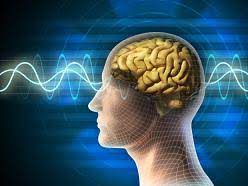Epilepsy- Diagnosis, diagnosis and management guidelines. Epilepsy is a group of somatic, vegetative and psychological symptoms that arise as a result of morphological and metabolic changes in the brain. Epileptic seizures are a heterogeneous group and have very different symptomatology, but not every seizure, behavioral or consciousness disorder is epileptic. A seizure is the expression of an altered responsiveness or an altered physiological state affecting part or all of the brain.
One seizure is not epilepsy
The condition for the diagnosis is repeatability of the seizures. It is assumed that at least 2 seizures without an apparent reason and the corresponding changes in the EEG record provide the basis for the diagnosis of epilepsy. An exceptional situation is the occurrence of one seizure in a person at risk (e.g. after severe brain trauma) and with pathological changes in the EEG. Epilepsy in this case will not be a mistake as a diagnosis.

One isolated seizure can occur in any person and is not epilepsy, it depends on the type of the provoking stimulus, its severity and the duration of the provocation.
Epidemiology
It is assumed that the incidence rate of epilepsy is 60/100,000 per year, or about 1%. Of these, only 10% of the seizures will recur, giving rise to a diagnosis of epilepsy. These figures indicate that epilepsy is one of the most common neurological diseases: it is 10 times more common than MS and 100 times more common than motor neuron diseases. Epilepsy in Poland is defined as the number of patients at 300-400 thousand.
The incidence of epilepsy is slightly higher in men and clearly higher in children and people over 65 years of age, the incidence rate in this period of life increases with the patient’s age and after the age of 75 it is higher than in children over 10 and amounts to 150 per 100,000 per year; it is associated with cerebral vascular diseases, degenerative diseases such as Alzheimer’s disease and brain tumors.
Epilepsy, its pathological anatomy

The most common pathological change is scarring of the mid-lower edge of the temporal lobe. It includes the gyrus of the hippocampus with the hook, the foot of the hippocampus (Amun’s horn, amygdala). These are the areas most sensitive to hypoxia, ischemia and edema. Another change is disturbances in the maturation of the cortex, which may occur in the form of clusters of unnaturally large neurons.
Status epilepticus
Status epilepticus is understood to mean a seizure lasting more than 30 minutes or several seizures between which the patient does not regain consciousness. In a patient with epilepsy, status epilepticus may develop as a result of inadequate medication intake, sudden change or discontinuation of medication (especially clonazepam, phenobarbital), intoxication or withdrawal from alcohol. Any type of seizure can develop into status epilepticus.
The most common epileptic states are tonic-clonic seizures. Status epilepticus leads to severe respiratory and circulatory disorders and, consequently, to cerebral hypoxia. The mortality in status epilepticus is as high as 80%, so each status epilepticus is a medical emergency. Each patient should be hospitalized in an intensive care unit.
